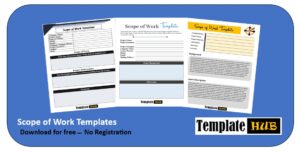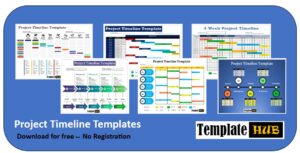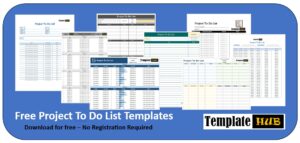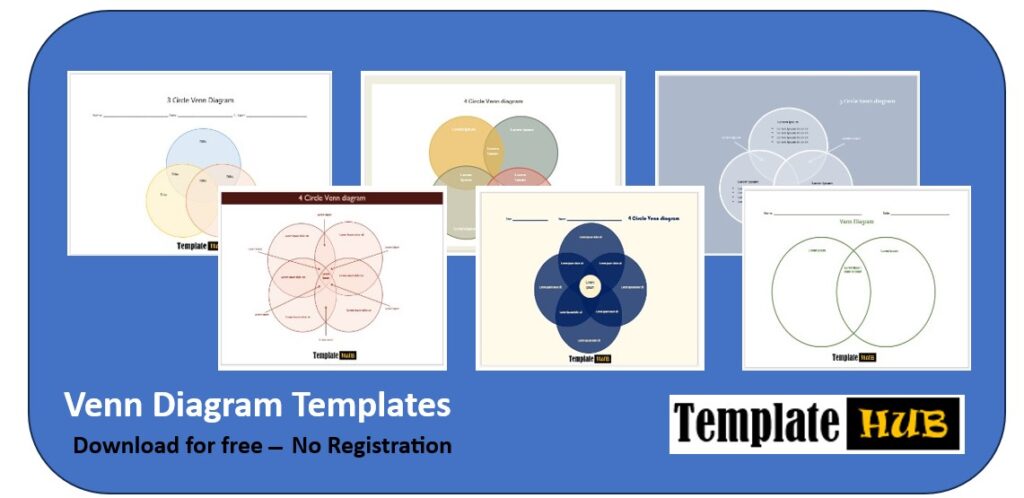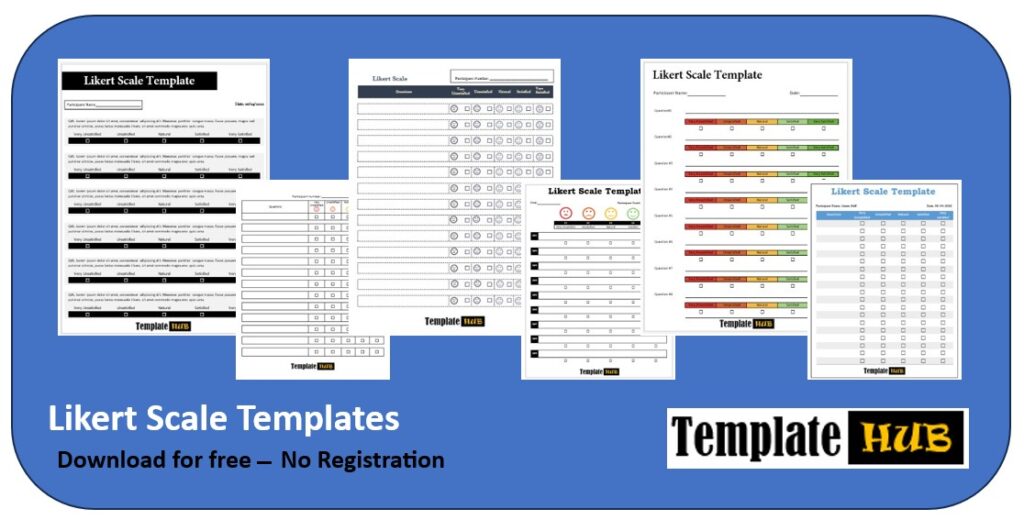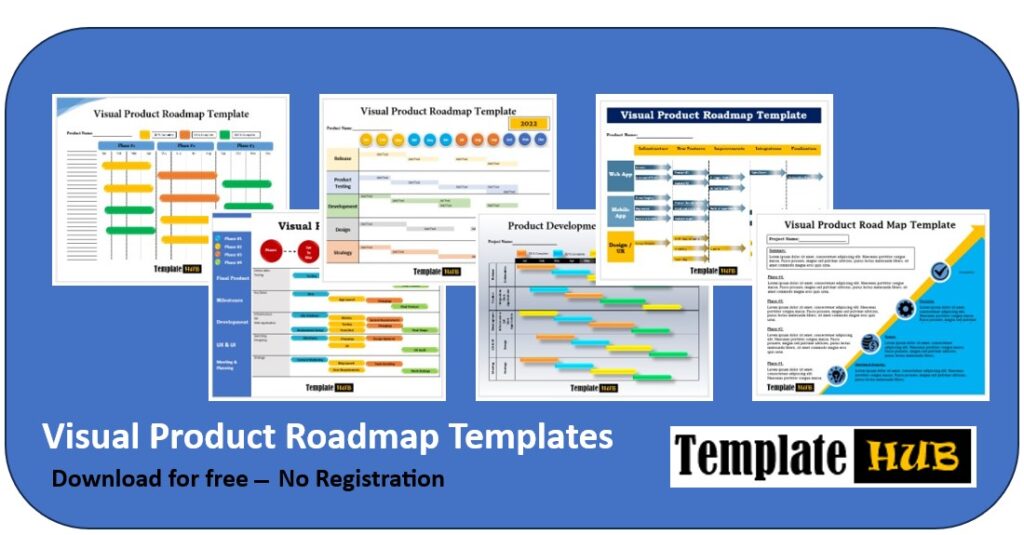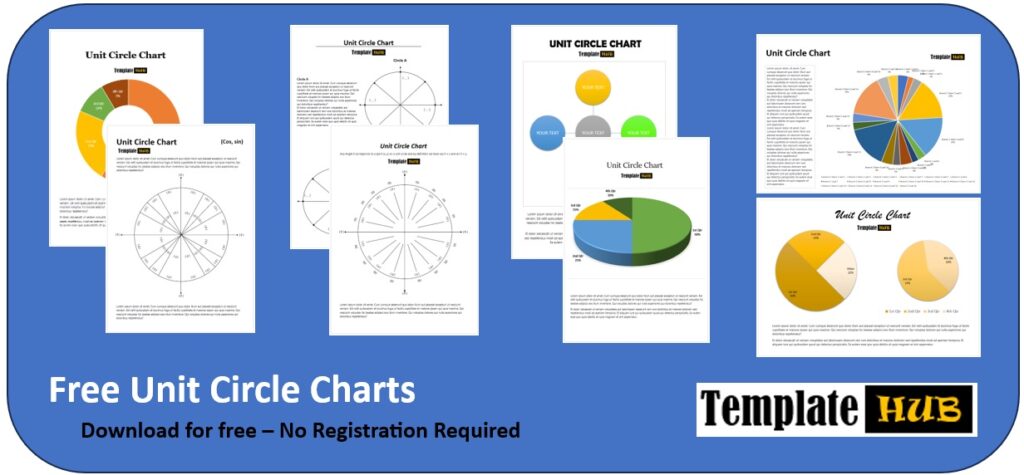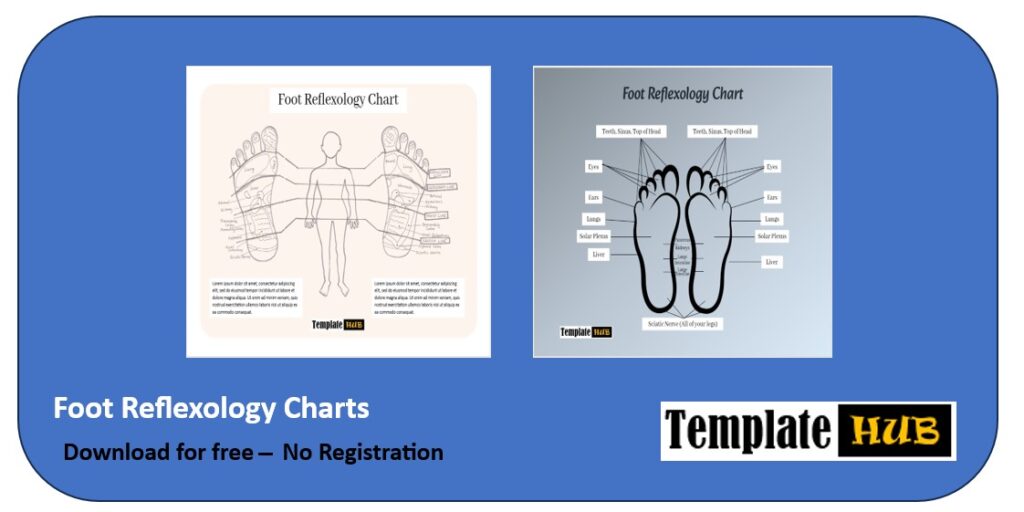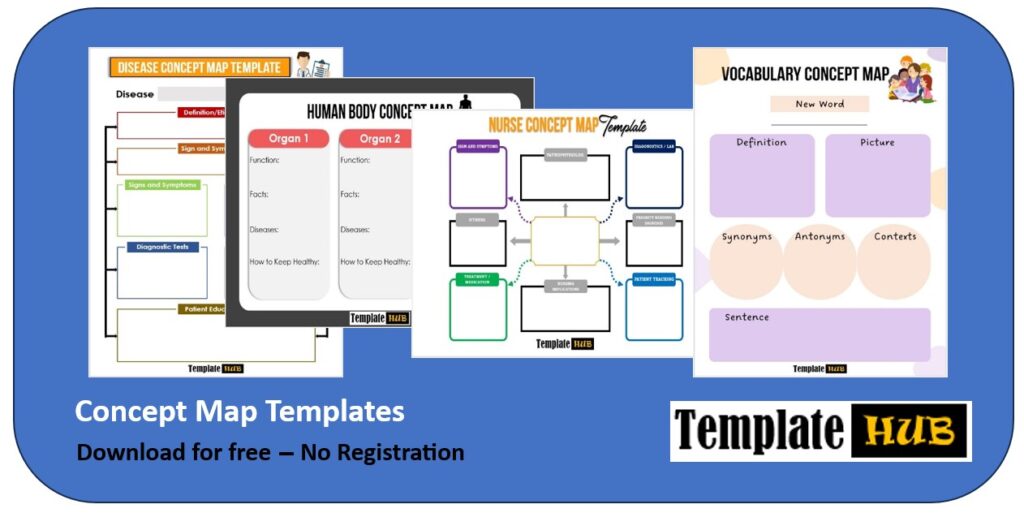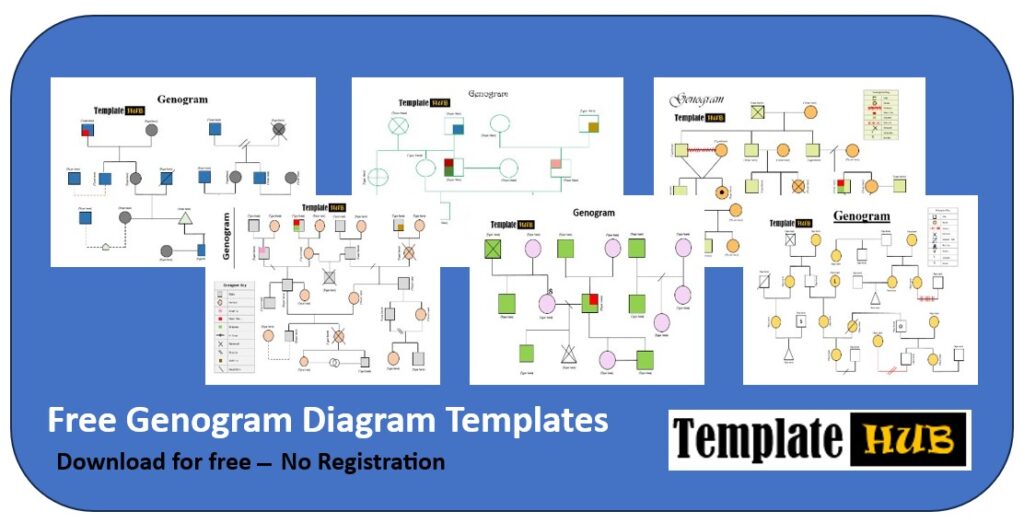Download these Free Work Breakdown Structure Templates in MS Word Format to help you prepare your Work Breakdown Structure easily.
It is essential to explain that particularly in large scale projects, mere estimation is insufficient. To deliver an expected outcome requires clarity of the client’s vision of the end product, team member’s third time i.e. available project time and the most important stages of the project. There is this division of the big project into milestone activities and then the duration and cost can be accurately forecasted. Engagement of a Work Breakdown Structure (WBS) is a common practice among project managers. It is a document which, in more or less explicit manner, stipulates the scope of projects, their deliverables and completion of the end product. Unlike a SOW where the focus is on how the deliverables are going to be met, in a WBS the emphasis is put on what needs to be delivered.
Key Reasons to Use Brief Work Breakdown Structure:
- It allows calculating the almost exact cost of the project
- It helps define how each part is dependent on others
- It creates a specific timeline and required duration for completion
- It helps create the Scope of the Work document
- It allows the team manager to estimate the required manpower
- It successfully distributes the load of work
- Assigning specific responsibilities with a work breakdown structure is easy
- Throughout the project, it can provide help in checking the progress level
- It can point out the risks and hurdles in the initial stage
Free Work Breakdown Structure Templates
Here are preview and download links for these Free Work Breakdown Structure Templates in MS Word Format,
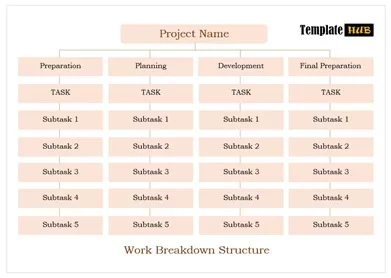
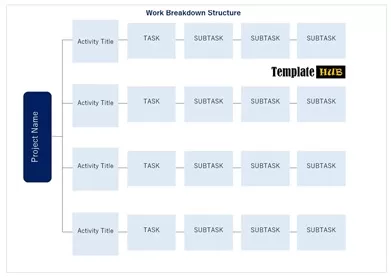
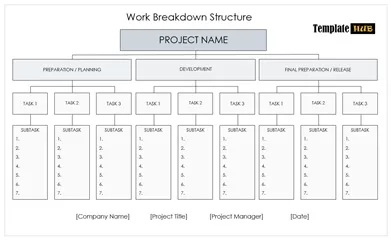
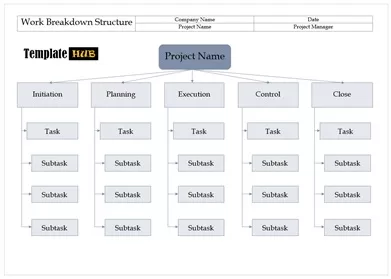
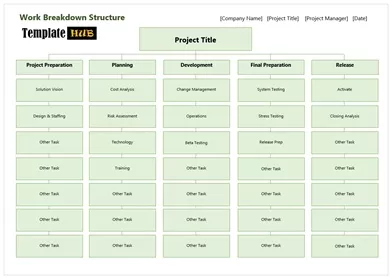
Guidelines to Create Work Breakdown Structure:
There are a variety of Work Breakdown Structures available when approaching a project, but two of the most commonly used types are the Tree structure and the tabular structure. In a Tree Structure, the name itself gives an idea of how the breakdown is represented – it is a tree with multiple branches coming from the main trunk. The trunk is the entire project, each big branch refers to a sub-category, and branches within branches refer to individual Longs. On the other hand, the tabular structure is displayed in a form of a table, where the first column bears the name of a project, the second one holds the important areas, and the third one gives the details of the work in respective areas. You can use either of the systems, dependent on your needs and wants.
Gather Input Data and Relevant Details:
You ought to know lots of different things first before you start clamoring for a Work Breakdown Structure (WBS). Either you can have a detailed outline of every attention or you and every element will have a project scope document. This document specifies the goals of the whole project. It also contains the main deliverables, costs, approximate timelines, the outcomes at the end of the work, and the threshold for acceptance. Thus, before going for a WBS, it is fundamental to comprehend the structure of the product and its components.
Define Key Deliverables and Their Components:
At this point, you have already determined which Work Breakdown Structure (WBS) style to use – either hierarchical or list-based. Therefore, you should have a conception of what the project is about and also the final product. First thing you need to do is write the project name on the top of the structure. Following that, introduce variations of the major goal by breaking it down in subheadings of milestones which are then connected to the top box with arrows. This should then be broken down into weeks, even days, and in turn simple and manageable tasks. Describing how each workload depends on each other meant that each of the workloads needed to be identified on the first occasion.
Divide Assignments Among Team Members:
Having learned how all the elements of the project make-up together, what types they belong to and where in the structure they fit, it is possible to give that Work Breakdown Structure (WBS) as a completed one. Following this would be giving the workloads to specific individuals within the team or the entire group if the tasks warrant as such. This therefore is an assurance that those involved in the project execution know their part in every stage of the implementation and in case something is unclear; they can seek more understanding.

Kamran Khan is a seasoned blogger with a deep-seated passion for office document processes and the art of productivity. With a wealth of experience spanning over a decade, Kamran has become a trusted name in the blogging community, known for his insightful articles and practical solutions that help individuals and businesses streamline their daily operations.
